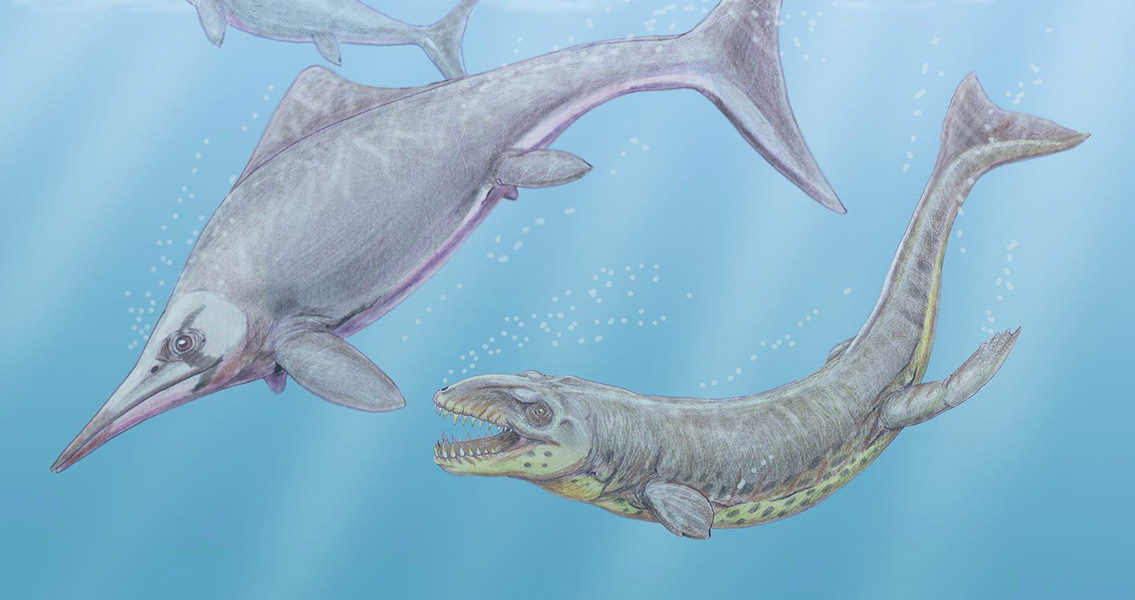<![CDATA[250 million years ago Earth was a maelstrom of volcanic eruptions, climate change and rising sea levels, all contributors to the Permian–Triassic (P-Tr), an extreme mass extinction event. Also known as the Great Death, it affected approximately 96% of all existing marine species, 70% of terrestrial vertebrate species and is the only mass extinction known to have affected insects. Because of the substantial loss of biodiversity, the recovery of life following this event took significantly longer than after any other mass extinction, conceivably as long as 10 million years. A new study from palaeobiologists with the University of Bristol suggests the possible exception to this prolonged recovery is the comeback of marine species. In the Mesozoic period, directly after the P-Tr event (between 252 and 66 Ma), marine reptiles like the plesiosaurs and ichthyosaurs were the ocean’s top predators. But their beginnings as well as their meteoric rise to dominance have never been fully understood. Research now shows that these marine reptiles didn’t expand slowly into their environments, but did so rapidly. Dr. Tom Stubbs, the study’s lead author, is quoted on the website Phys Org as saying, “We show that when marine reptiles first entered the oceans in the Triassic period, they rapidly became very diverse and had many morphological adaptations related to feeding on varied prey. Within a relatively short space of time, marine reptiles began feeding on hard-shelled invertebrates, fast-moving fish and other large marine reptiles. The range of feeding-related morphological adaptations seen in Triassic marine reptiles was never exceeded later in the Mesozoic.” This new research utilized the fossil record of Mesozoic marine invertebrates to measure variations in the function and shape of their teeth and jaws. Up until now, studies have been based primarily on estimations of the creatures’ biodiversity through time. The new study looks at the range of sizes and shapes, and then ties characteristics of the shape to modes of life, including their specialized feeding modes. Michael Benton, professor and co-author of the study, told Phys Org, “We always knew that the marine reptiles expanded relatively fast into a world in turmoil, after a devastating mass extinction event that killed as many as 95 per cent of species. But what was unusual was that they were inventing entirely new modes of life that had not existed before the End-Permian mass extinction. Our work shows they expanded into nearly every mode of life, indicated by their feeding habits and range of body sizes, really much faster than might have been imagined.” Interestingly, only 30 million years after the evolutionary burst of marine reptiles, they were victims of a number of extinction events which occurred in the Late Triassic that wiped most of the groups out. The research shows these events removed numerous specialized niches and adaptations, and had a long-term effect on the evolution of marine reptile. This research has been published in the journal Paleobiology ]]>
Study Shows a Quick Evolutionary Recovery by Marine Reptiles
